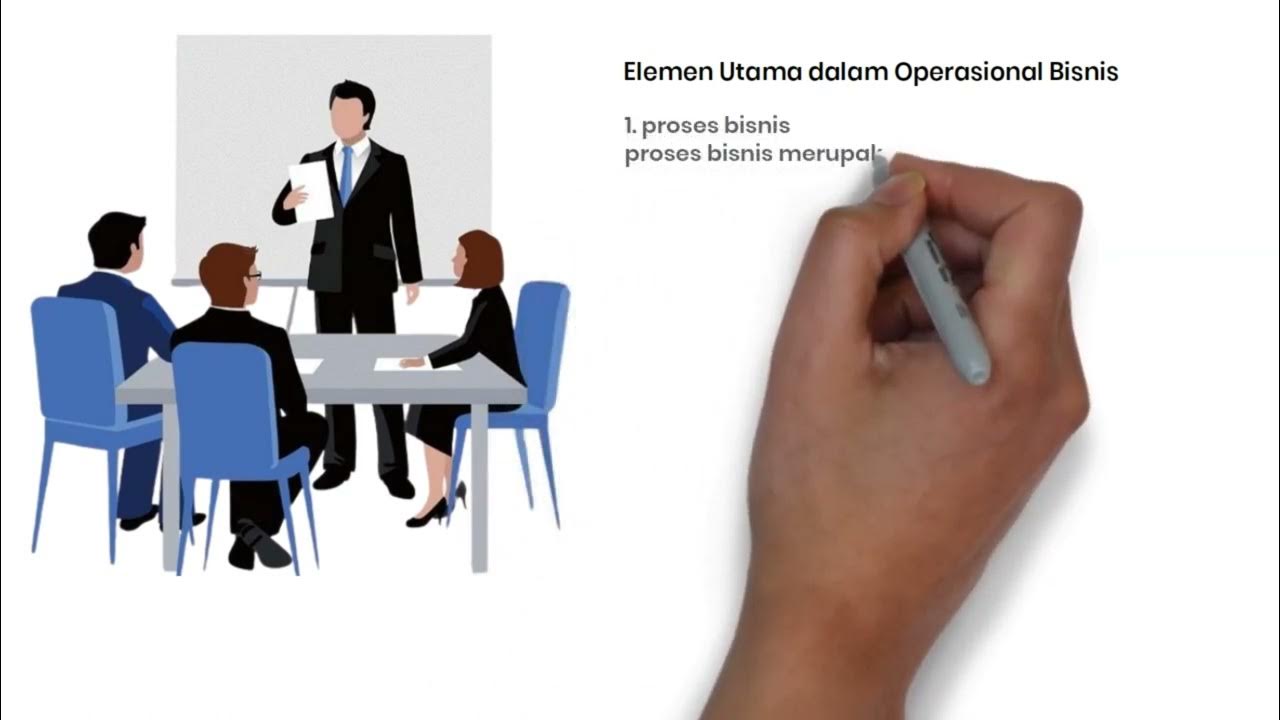RFID Technology Explained
Summary
TLDRThis video by Kestronics highlights the transformative power of RFID technology in business operations, particularly in clothing manufacturing and distribution. It explains how RFID tags streamline inventory management by automating stock takes and improving accuracy during warehouse operations. With ultra-high frequency RFID readers capable of detecting up to 900 items per second, businesses can easily track size, color, and style without manual SKU lookups. Kestronics and Zebra offer tailored solutions to simplify RFID deployment, allowing businesses to enhance efficiency and focus on critical tasks, all while enjoying increased operational ease.
Takeaways
- 📦 Kestronics, with Zebra's RFID products, simplifies business operations using RFID technology.
- 👗 RFID tags are attached to garments, functioning like standard tags but with a transmitter for stock management.
- 🏭 In manufacturing, RFID speeds up stock-taking and improves inventory accuracy.
- 🚚 During distribution, fixed RFID antennas automatically confirm shipments, eliminating manual checks.
- ☕ RFID technology allows for more efficient use of time, enabling quick stock checks and even breaks.
- 📊 Businesses can conduct stock takes as frequently as needed, moving from annual to hourly or daily checks.
- ⚡ Ultra High Frequency (UHF) RFID readers can detect up to 900 items per second for automatic logging.
- 🎨 Size, color, and style data can be captured just by walking through aisles with RFID tags.
- 🔧 Kestronics and Zebra offer customizable solutions, making RFID deployment user-friendly for businesses.
- ✅ RFID technology streamlines operations and enhances efficiency in warehousing and retail environments.
Q & A
What is RFID technology and how is it utilized in business?
-RFID (Radio-Frequency Identification) technology uses electromagnetic fields to automatically identify and track tags attached to objects. In business, RFID simplifies inventory management and streamlines operations by enabling automatic tracking of items without manual checks.
How do RFID tags work in clothing manufacturing?
-In clothing manufacturing, RFID tags are attached to garments. These tags resemble standard labels but contain transmitters that help in booking stock, speeding up stock takes, and ensuring accurate inventory management.
What are the benefits of using RFID in distribution?
-Using RFID in distribution allows for automatic confirmation of received stock without manual checking of each item. This efficiency saves time, allowing employees to focus on other tasks.
How often can stock takes be performed with RFID technology?
-With RFID technology, stock takes can be performed as frequently as needed—once an hour, once a day, or more—compared to the traditional method of once a year.
What is the detection capability of ultra-high frequency RFID readers?
-Ultra-high frequency RFID readers can detect up to 900 items per second and automatically log them into a computer system, significantly improving inventory accuracy and speed.
How has the inventory management process changed with RFID?
-The inventory management process has shifted from manually checking SKUs and counting items by size or color to automatically logging these details simply by walking down an aisle equipped with RFID technology.
Do users need to be experts to use RFID technology in their operations?
-No, users do not need to be experts to deploy ultra-high frequency RFID readers. Kestronics and Zebra offer custom solutions to simplify the implementation of RFID technology in warehouses and retail environments.
What role does Kestronics play in implementing RFID technology?
-Kestronics collaborates with Zebra to provide RFID solutions tailored to specific business needs, ensuring that the deployment of RFID technology is user-friendly and effective.
Can RFID technology improve employee productivity?
-Yes, RFID technology improves employee productivity by reducing the time spent on manual stock checks and allowing for quicker inventory management processes.
What are the key components of an RFID system in a warehouse setting?
-The key components of an RFID system in a warehouse include RFID tags attached to products, RFID readers to capture data, fixed RFID antennas for scanning, and a computer system to log and manage the inventory data.
Outlines

Esta sección está disponible solo para usuarios con suscripción. Por favor, mejora tu plan para acceder a esta parte.
Mejorar ahoraMindmap

Esta sección está disponible solo para usuarios con suscripción. Por favor, mejora tu plan para acceder a esta parte.
Mejorar ahoraKeywords

Esta sección está disponible solo para usuarios con suscripción. Por favor, mejora tu plan para acceder a esta parte.
Mejorar ahoraHighlights

Esta sección está disponible solo para usuarios con suscripción. Por favor, mejora tu plan para acceder a esta parte.
Mejorar ahoraTranscripts

Esta sección está disponible solo para usuarios con suscripción. Por favor, mejora tu plan para acceder a esta parte.
Mejorar ahoraVer Más Videos Relacionados

What equipment is there in the smart library

Analisis Bisnis Internasional Pada Brand Zara Oleh Inditex Company

Logística Integrada - u03t02

Digital Operation Bisnis Digital (SMK Kelas XI dan XII)

Penerapan Internet of Things pada layanan kurir dan logistik

Video Interview: Silicon Craft Technology CEO Bodin Kasemset
5.0 / 5 (0 votes)
